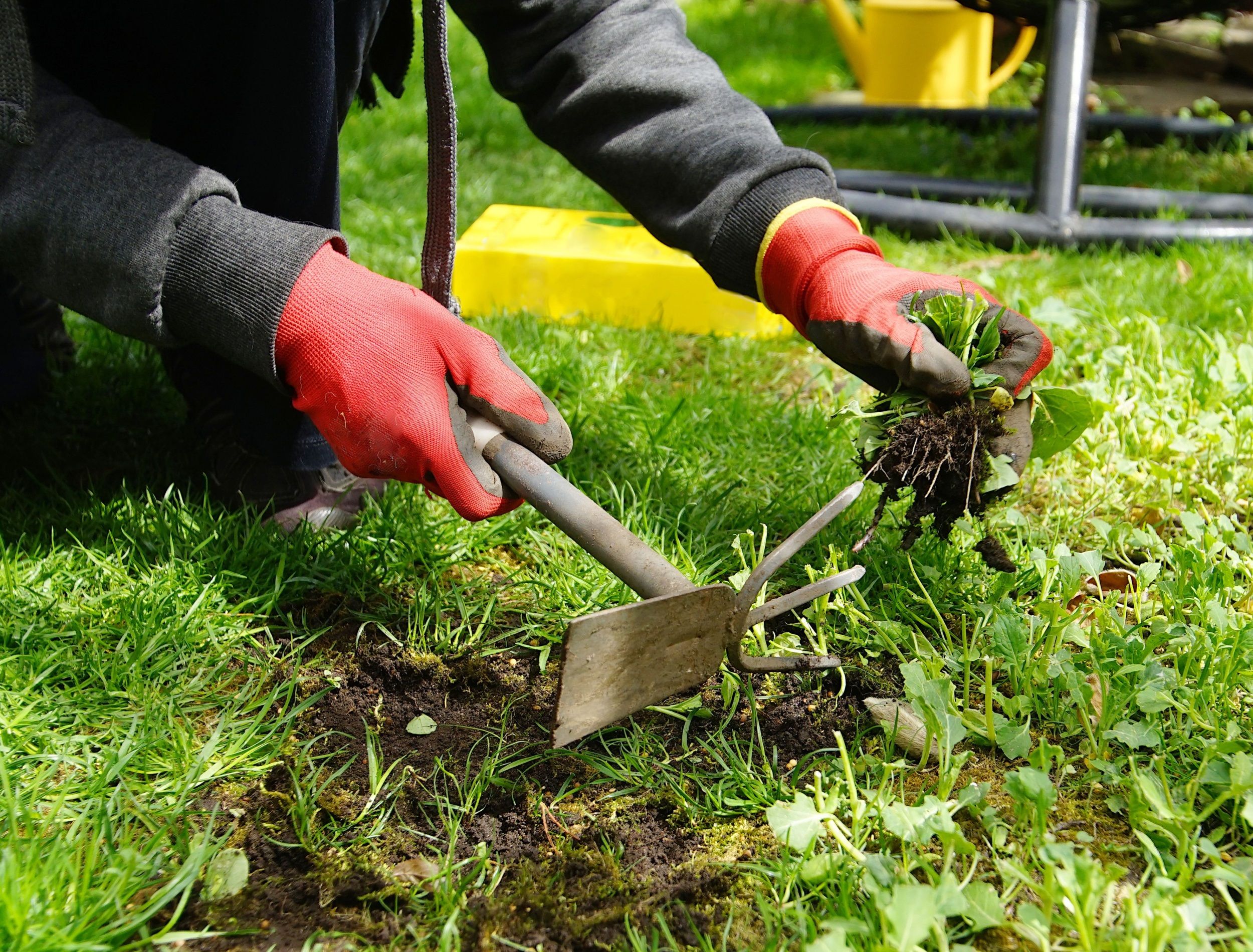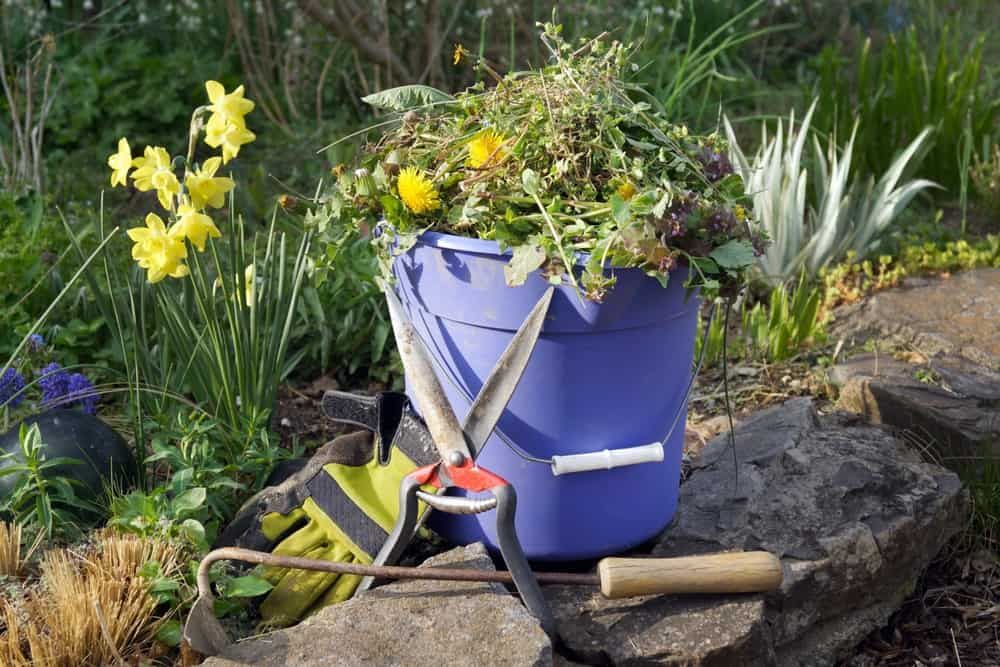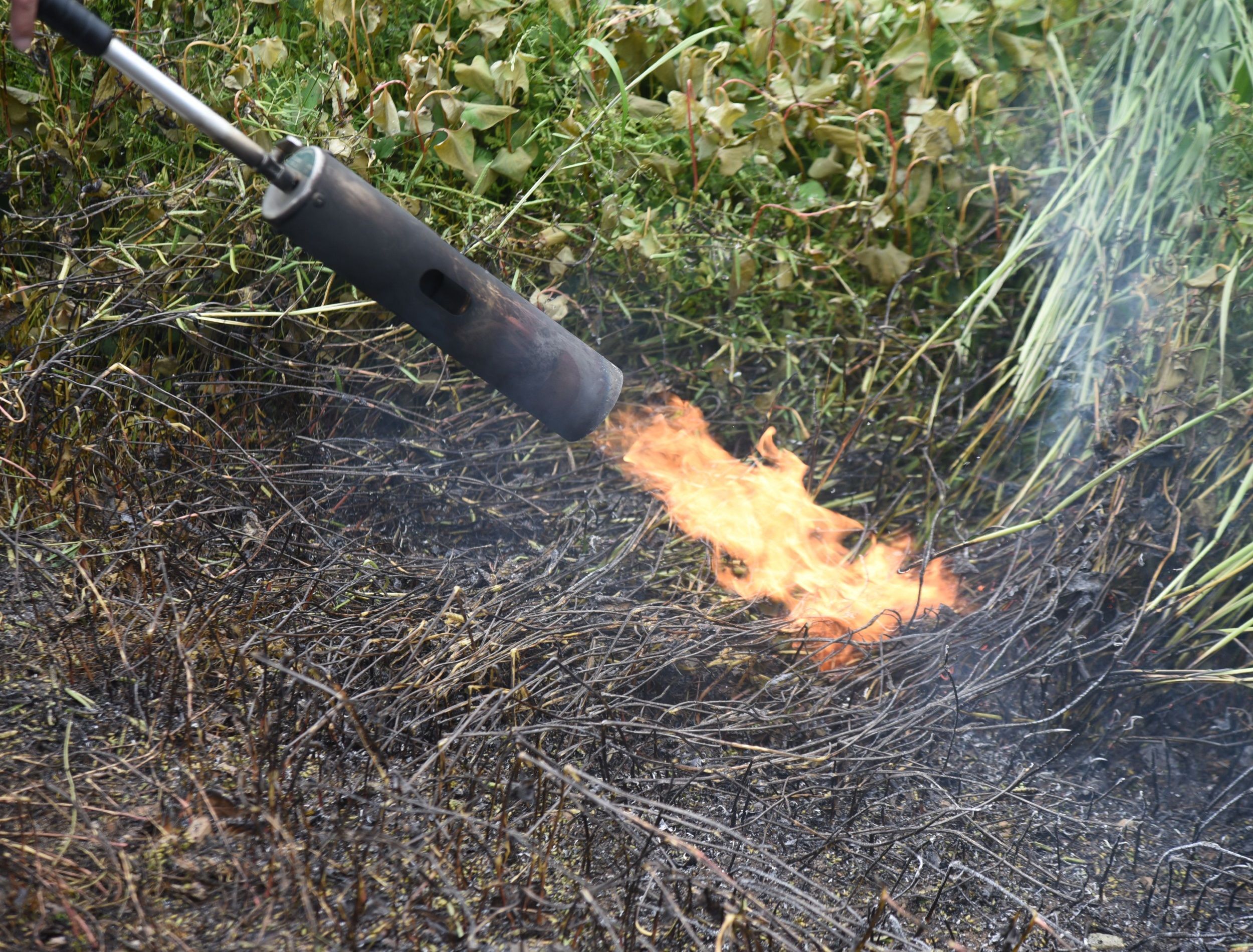Weeds are a frustrating part of gardening, whether you have a bed full of florals or vegetables. Unfortunately, they are more than just an eyesore. Weeds compete with plants for nutrients and water, acting as a host for diseases and pests, which can quickly transform your garden from an oasis to a nightmare.
While properly removing these pesky roots can be difficult, the real issue lays with how the endeavor affects your garden. Many weed-removal methods involve chemicals that aren't exactly kind to the luscious blooms or crisp veggies you've been growing.
So, what's the best way to kill weeds without hurting your garden? Below, you'll find several different methods for freeing your garden of weeds, with no extra harm done to your precious plants.
Tools You'll Need
Image credits: Nancy J. Ondra via shutterstock
To properly remove weeds while protecting your crops and blooms, there are a number of different tools you'll need. Many of the tools listed below are optional depending on which method you end up choosing!
- Gardening gloves
- Hand trowel
- Garden hoe
- Flame weeding tool
- Baking soda
- Dish soap
- Spray bottle
- Water
- Groundcover
- Mulch
Weed by Hand
Image credits: miskolin via Canva
Removing weeds by hand means you don't have to use any damaging herbicides or chemicals on your garden. Plus, you'll get to the (literal) root of the problem.
This method is best used on immature weeds as soon as you spot them. You can also use a garden trowel or hoe to carefully remove the invasive plants from the soil, ensuring you remove the entire root system.
Hand weeding is a great way to control annual grasses such as crabgrass, which can cover the ground if they are not dealt with quickly enough.
Flame Weeding
Image credit: tamu1500 via Shutterstock
Flame weeding is a less common option, but it is just as effective and more efficient than weeding by hand. Powered by propane or another heat source, the flame weeder will act as a lighter and burn the undesired plants.
To use this tool, simply hold it directly above the weeds. The flame will heat up the plant's cell barrier, killing it and its root system. This is a great option for pin pointing specific weeds and removing them, but it's important to be careful and avoid the plants you want to protect. It's also a great way to clear weeds from gravel or cracks in your driveway.
Just remember, check that flame weeders are legal for use in your area and never use them during a drought period.
Natural Weed Killers
Image credits: FotoHelin via Canva
Hand weeding and flame weeders, in conjunction with preventative measures (more on that later), are usually effective, but a large amount of mature weeds calls for the use of herbicides.
Unfortunately, chemical weed killers can cause harm to plants and animals, and even pollute the air, water, and soil. With that said, there are many ways to kill weeds naturally. Below, you'll find a few of the most common and effective options.
For starters, you can sprinkle a teaspoon of baking soda over the weeds and follow up with water. This will increase the salt levels in the soil and dry out the weeds. Baking soda can be used for other things such as avoiding powdery mildew in the garden or to brighten your tomatoes.
Another alternative to using chemicals, is simply using hot water! You can pour boiling water over the weeds to kill them, just be careful to avoid other plants, focusing only on the weeds.
You can also opt to make your own herbicidal soap! Mix 5 tablespoons of dish soap with 4 cups of water and put the mixture in a spray bottle. Then, spray the soapy mixture on the weeds in hot, sunny weather. There's also mixes that use vodka, vinegar, or clove oil to effectively burn the plants. Remember to keep this mixture out of the soil as it can harm your other plants.
Try out a method and see how it works for your garden!
Preventing Weeds
Image credits: ronstik via Canva
Removing weeds as soon as you notice them is one of the best ways to protect your garden. Plucking them from the ground before they have a chance to develop and spread will reduce the need to use more invasive products. This means keeping an eye on your crops and checking beneath leaves and anywhere weeds may be hiding.
Once you've freed your garden of these invasive plants, the best way to protect your blossoms and vegetables is to prevent weeds all together!
First, lay a 3 inch layer of mulch, whether you use straw, wood chips, or even newspapers. The mulch will block sunlight and deprive seeds of what they need to germinate and grow. Remember that mulch isn't always going to stop weeds, but it is a good preventative measure to have in place. Also, ensure the mulch you are laying is not infected with weed seed, rhizomes, or tubers.
As an alternative to mulch, you can plant vegetable plants closer together to shade the soil. You can also plant ground cover as an aesthetically pleasing and effective solution.
Garden of Weed'n
Paying close attention to your yard, regularly hand weeding, and using preventative measures will keep your garden safe and free of weeds. With that said, there are lots of natural and DIY methods for handling weeds without harming your outdoor oasis.
Do you have any tips for handling weeds while maintaining your garden? Share in the comments below!






